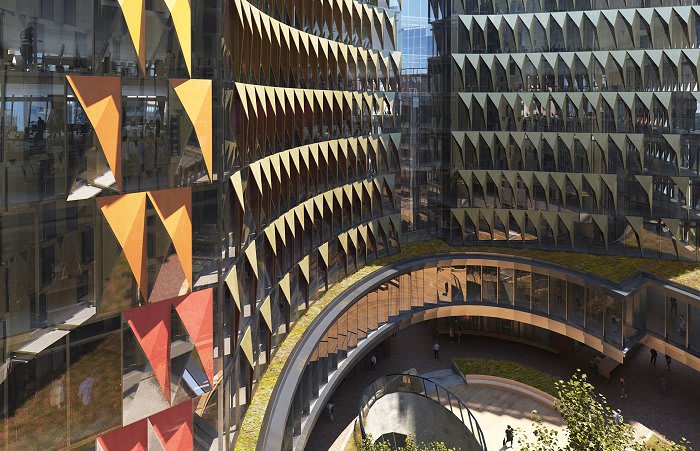Woods Bagot elaborates on the Carlton Connect Initiative
Woods Bagot has circulated fresh images of the newly approved Carlton Connect Initiative.
Outlined by Urban.com.au at the time of approval, Woods Bagot as the masterplan and lead design architect has also provided commentary on the development which will account for the former Royal Women's Hospital on the corner of Grattan and Swanston Streets in Carlton.
In its place will rise five new connecting buildings around the perimeter of the site, all surrounding a publicly-accessible 'Oculus' open space.
The string of buildings will upon completion lay claim to being the nation's most advanced, and a globally recognised innovation precinct. University of Melbourne staff and students, researchers, local and international businesses and start-up companies will be present in the same location, with the intent of efficiently formulating new ideas and taking them to market.
Upon completion of the site's demolition, Lendlease will begin construction of the $425 million project mid this year. Shops, cafes, public spaces and a new home for Science Gallery Melbourne will be the public drawcards, whilst accommodation for more than 500 students along with co-working and commercial office spaces will form the backbone of the development.
Owing to the scope, size and complexity of the design, Woods Bagot considers the new precinct as unprecedented in Australia.
For this extraordinary site to support people working together in the creative and entrepreneurial ways envisioned by the University of Melbourne's ambitious plan for innovation, we needed to completely re-think what the project could offer back to both the university and to Melbourne's urban innovation.
What we've generated are new forms and, importantly, opportunities for exceptional circulation through the site and a great diversity of spaces at ground level, as well as maximising sunlight for wellbeing and sustainability.
Woods Bagot principal and project design leader, Hazel Porter
Externally the Carlton Connect Initiative maintains strong design semblance to National Australia Bank's campus at 700 Bourke Street. Both Woods Bagot designs maintain a similar shape, triangular facade detailing and fissures running the height of the buildings.
Along with the complexities of effectively designing for the melding of multiple entities within a purpose-built precinct, Woods Bagot also factored in sustainability aspects.
From winning University of Melbourne's design competition for the project in December 2016, Woods Bagot intended for the design to be bold and iconic, and a symbol of the university's unyielding pursuit of excellence. The focus on the person and their experience within is also a major design aspect thought through by Woods Bagot.
Innovation comes from people, the way they interact, the way they collaborate on a common purpose. Therefore, it's essential that every part of this scheme lives and breathes human-centred design
Providing an exceptional educational and professional experience to attract the best and brightest demands the setting of a new global benchmark to stay competitive on the world stage of higher education.
Woods Bagot principal and global education sector leader, Sarah Ball
This education and innovation precinct will complement the Melbourne Biomedical Precinct in Parkville and the Arts Precinct in Southbank. It's also part of the emerging Melbourne Innovation Districts – a City of Melbourne initiative to drive investment in the knowledge economy and help shape Melbourne's future.
Targeted completion for the development which consists of 74,000 square metres of Gross Floor Area is late 2020.
Woods Bagot CCI project contributors
Hazel Porter, Sarah Ball, Alastair Flynn, Harry Charalambous, Wes Baigent, Sophie Blain, Ali Tehami, Femi Akande, Nirvan Basnet, Krisi Patras, Susannah Xu, Pete McKew, Derek Huynh, Roberto Spadaccino, Mluk Nehme, Peter Miglis, Sara Sidari, Kevin Mitchem, Robert Rosamilia, Lara Viguet.
